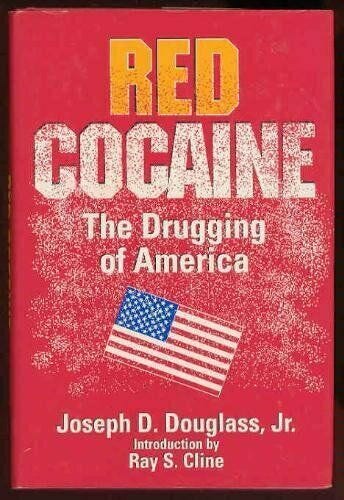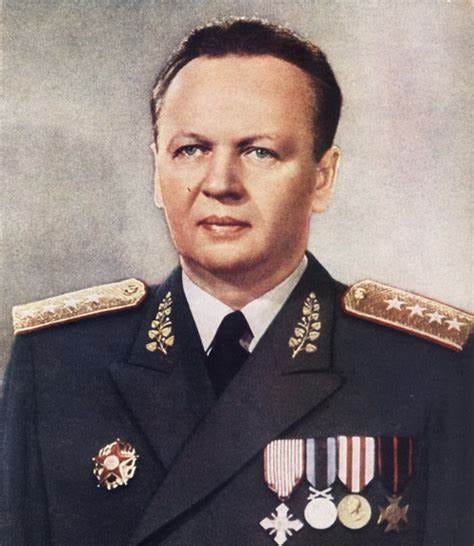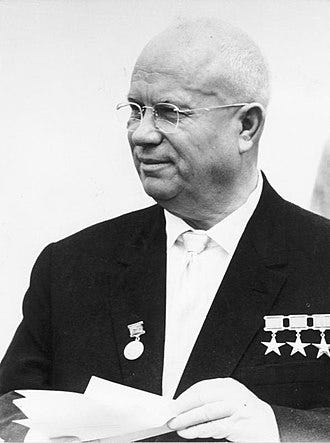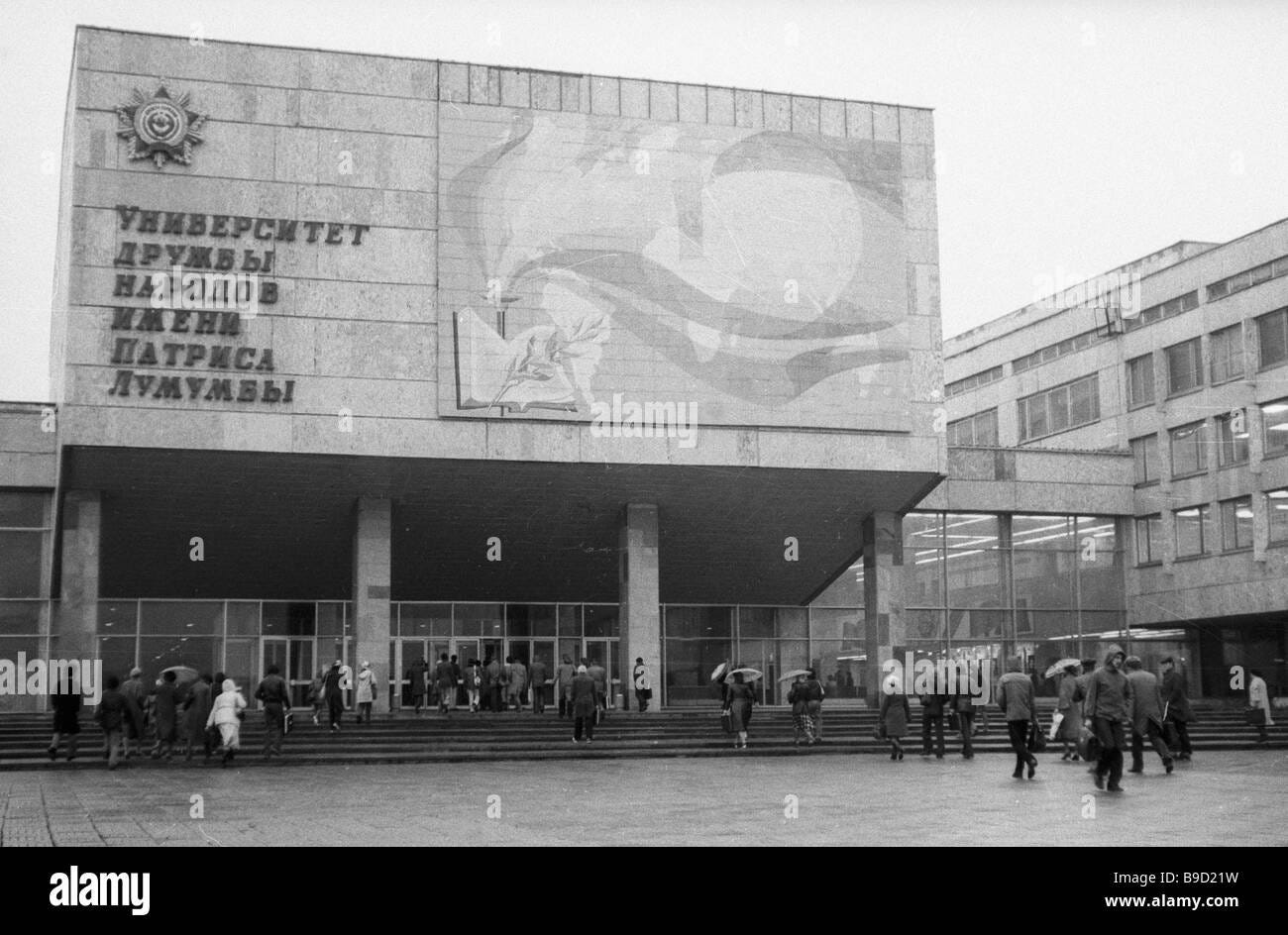US Drug Epidemic: Soviet Warfare Against the West - Part 1
Red Cocaine details the origins of the US Drug Epidemic as part of the Perestroika Deception of the Leninist World Revolution
Red Cocaine: The Drugging of America and the West, where communist defector General Jan Sejna described in detail how the Soviet and Chinese Leninists hijacked drug trafficking in the 1950s in order to use it as weapon in the ongoing war waged against The West.
The narco-war is based upon Leninist strategy and developed under Stalin by his police chief, Lavrentii Beria. After Mao Zedong used narcotic drugs against his own people prior to 1949, the Communist Chinese extended their drug operations internationally.
(Pictured above: Chairman Mao with Sidney Rittenberg)
the Soviet offensive was designed to be far more extensive than the Chinese operation and turned drug trafficking the effective political warfare and intelligence weapon. - accomplishing this almost without any recognition in the West of Soviet involvement.
Army Major General Jan Šejna, who defected from Czechoslovakia to the United States in February of 1968. As Secretary of the Defense Council, which was the top decision-making body in matters of defense, intelligence, foreign policy and the economy. He regularly met the highest officials in the Soviet Union and other Communist countries. He was present during the inception, planning and implementation of Soviet narcotics trafficking operations.
(Pictured above: General Jan Sejna)
The Soviet concept of using drugs and narcotics trafficking as a strategic operation, Sejna explains, emerged during the Korean War. The Soviets were assisting North Korea, but not so obvious as the Chinese. During that conflict, the Chinese and North Koreans used drugs against US military forces to undermine the effectiveness of servicemen and to raise revenues. As part of this intelligence mission, Czechoslovakia constructed a hospital in North Korea. It was reportedly built to treat casualties, the real use of the hospital was as a research facility in which Czechoslovak, Soviet, and North Korean doctors at the hospital experimented on US and South Korean prisoners of war.
(Pictured above: American POWs captured by North Korea)
In order to learn more about the biological and chemical make-up of American and South Korean soldiers, autopsies were performed on the POWs who did not survive the experiments. Soviet doctors determined that an unusually high percentage of young US soldiers had suffered cardiovascular damage, which they referred to as 'mini heart attacks'. At the same time, Soviet intelligence, which was studying Chinese drug-trafficking, determined that the young US servicemen were also the most prominent users of the harder drugs. The Soviet leader Nikita Khrushchev viewed drug and narcotics trafficking as a strategic operation that would directly weaken the enemy, rather than merely as a financial or intelligence tool.
(Pictured Above: Nikita Khrushchev)
Khrushchev ordered the Soviet Czechoslovak study to examine the total effects of drug trafficking on Western society; especially, the effects on productivity, education, the military, and its use in support of Soviet Bloc intelligence operations. The narcotic trafficking potential was examined in the context of “long range strategy” and even the effects of drugs over several generations were analyzed by the Soviet Academy of Sciences.
The study concluded, drug trafficking would be extremely effective against vulnerable targets: the United States, Canada, France and West Germany. In late 1955 or early 1956, the study was approved by the Soviet Defense Council. when the Soviets decided to begin narcotics trafficking against the bourgeoisie, the main targets were 'American capitalists.’
the Soviets under Khrushchev's direction were working to modernize the world revolutionary movement and believed the movement had grown stagnant under Stalin. Soviet strategy for narcotics trafficking is a sub-component of the global strategy for the revolutionary war. While the primary target is often thought to be the third world, this is not the case. Soviet strategy and tactics were developed for the whole world, within which the most important sectors were the industrialized nations and the most importantly the United States. The basic updated revolutionary strategy took shape in the years 1954 to 1956. As detailed by Sejna, there were five principal changes:
(Pictured above: Patrice Lumumba University in Moscow)
· First was enhanced training of leaders for the revolutionary movements - The founding of Patrice Lumumba University in Moscow is an example.
· The second step was the actual training of terrorists. Training for international terrorism actually began under cover of the 'fight for liberation', within the context of the Comintern's decolonization policy. The term 'national liberation' was coined to replace revolutionary war movement as a two-way deception: to provide a nationalistic cover for what was basically an intelligence operation and to provide a label that was semantically separated from the Communist revolutionary war movement.
· The third step was international drug and narcotics trafficking. Drugs were incorporated into the strategy for waging revolutionary warfare as a political and intelligence weapon for deployment against 'bourgeois societies' and as a mechanism for recruiting agents of influence around the world.
· The fourth step was to infiltrate organized crime and to establish Soviet Bloc sponsored and controlled organized crime syndicates throughout the world.
· The fifth step was to plan and prepare for sabotage throughout the whole world. The network for this activity was to be in place by 1972.
Sejna's summary of the global revolutionary strategy developed following the death of Stalin is consistent of the account of Soviet defector, Anatoliy Golitsyn (New Lies for Old and The Perestroika Deception) and his account of the Perestroika deception. The dismantling of the Stalinist model that realized under Mikhail Gorbachev. Recall Gorbachev's statement, 'No, we are not retreating a single step from socialism, from Marxism-Leninism.'1 The Soviet drug-trafficking operations began in earnest in 1960, precisely when the finishing touches were being put to the long-range deception strategy, ratified at the 81-Party Congress held in Moscow in December 1961.
Moscow's decision on organized crime was made in 1955. It was also to be a global operation targeted against all countries, not just the United States, although organized crime in the United States, France, Great Britain, Germany, and Italy were primary targets. The main reason for infiltrating organized crime was the Soviet belief that high-quality intelligence - information on political corruption, money and business, international relations, drug-trafficking, and counterintelligence. The Soviets reasoned that if they could infiltrate organized crime, they would acquire the ability to control many politicians and would have access to the best information on drugs, money, weapons and corruption of all kinds. Another motive was to use organized crime as a cover for distributing drugs.
According to Sejna, “The Soviets put together study groups to analyze organized crime, to identify the main criminal groups, to develop a strategy and tactics for infiltrating the groups, to identify what people could be used to promote infiltration, and to examine the possibility for organizing or helping to organize new criminal franchises. In Czechoslovakia, the studies went on for six months. These studies were not taken lightly; on the contrary, they were high-level operations involving top officials from military intelligence, counterintelligence, civilian intelligence and the Administrative Organs Department of the Central Committee.”
The first plan was put into action in 1956. The plan instructed Czechoslovak intelligence to infiltrate seventeen different organized crime outfits, as well as the mafia in France, Italy, Austria, Latin America and Germany. The Italian Communist Party was used in the infiltration operation. According to the author, “Twenty percent of the Italian police were members of the Communist Party at that time. These members helped Soviet Bloc intelligence agents to infiltrate the mafia. War criminals, e.g. Germans, were also coerced into assisting the Soviet Bloc agents in this endeavor, especially throughout Latin America. The Czechoslovak operation was very successful and did not cost much money. Organized criminal activity was developed around information collection and blackmail; it was a two-sided operation. Once inside, the agents remained largely passive; they just collected information. Then, at the right opportunity, information would be released for political reasons - for example, to trigger revolutionary changes, or to create a situation that could be exploited by the Social Democrats. This is why the operation was organized within the unit responsible for strategic intelligence: it was used for strategic advantage. Narcotics, terrorism and organized crime were coordinated and used together in a complementary fashion. Drugs were used to destroy society. Terrorism was used to destabilize the targeted country and to prepare a revolutionary environment. Organized crime was used to control the elite. All three strands were long-range strategic operations and all three had been incorporated into Soviet Bloc planning by 1956.”
The Soviets establishment of training centers for drug-traffickers in Czechoslovakia and were joint Soviet-Czechoslovak operations. There were both civilian intelligence-managed training centers, which were jointly planned by KGB officials and Czechoslovak officials from the Second Administration of the Ministry of Interior (KGB intelligence counterpart) and military intelligence-managed training centers, which were jointly planned by the GRU (Soviet Military Intelligence) and its Czechoslovakia’s Zs. According to Sejna, these plans were developed in 1959 by the Defense Council.
The Soviets provided the Czechoslovaks with a copy of the Soviet schedule and lesson plans, which the Czechoslovaks copied. The course included instruction in:
The nature of the drug business, types and quality;
Means of production;
Organization of distribution;
Drug markets and buyers;
Security;
Infiltration of existing production networks;
How to use the experience of intelligence networks;
Communications within drug organizations;
How to pass intelligence information; and,
How to recruit intelligence sources.
At the Zs centers, two different groups were processed for training:
The first group was recruited by the military and civilian intelligence services. This group was strictly for drug 'criminals' - the attendees were neither Communists nor ideologically motivated. The word 'criminals' because that is what the training was to produce. However, all recruits were carefully screened by military or civilian counterintelligence to make certain that the recruits were clean; that is, that they did not have criminal records or a background in corruption that rendered them susceptible to blackmail by another party. Often, the recruits were sons or daughters of people in positions of power.
The second group were people recommended by the First Secretaries of the various foreign Communist Parties. These were Communists who were considered loyal to the cause. Their training was slightly different, because their trafficking was also intended to serve a local political purpose and because they operated and communicated through different special (Party or intelligence) channels. Their drug-trafficking (and training) was heavily oriented to support the First Secretary of the local Communist parties; for example, to compromise opposition leaders.
In addition to Czechoslovak instructors, the Soviets often provided two instructors for each course who had practical experience, often these were Latin Americans or others who looked the part and spoke fluent Spanish. The courses ran for three months and a total of four groups trained each year. As Sejna recalled, the first group to take the Zs course in Czechoslovakia was small - seven future drug criminals consisting of four Latin Americans, two West Germans, and one Italian or French national. By 1964, the group size had expanded to fourteen and by the end of the 1960s, twenty. Approximately thirty students were trained by the Zs in the first year and by 1968 the annual output had reached eighty graduates.
We must rethink the opening of the Southern U.S. Border and see it as a continuation of the Leninist War against the West. Why hasn’t Texas Governor Greg Abbott actually enforced the Invasion Clause of the Texas Constitution? Does it have anything to do with the Trotskyite founding of Neoconservatism, Libertarianism, and Paleo conservativism by Irving Kristol of the CIA? Why Microsoft is headquartered in Israel and populated by Unit 8200 veterans. Microsoft Election Guard was used in the 2020 & 2022 Texas elections. The same Israel that was founded by self-proclaimed Bolshevik David Ben Gurion. It’s time to start asking the hard questions.
Wait for Part 2…
-D.C.
North Koreans in Czechoslovakia
'Putin Involved in Drug Smuggling Ring', Says Ex-KGB Officer by Damien Sharkov 3/13/15
The Communist Manual of Instructions on Psychopolitical Warfare contains explicit statements concerning the intended use of drugs against targeted populations for revolutionary purposes.
'We will disarm the capitalists with the things they like to taste'. CHOU EN-LAI, 1958
'Deception and drugs are our first two strategic echelons in the war...'. NIKITA KHRUSHCHEV, 1963
'I was ordered to load up the United States with drugs'. MARIO ESTEVEZ GONZALEZ, Cuban intelligence agent, 1981. 'Drugs are used as political weapons. The target was the youth...'. ANTONIO FARACH, high-level Nicaraguan official, 1984. '‘‘Drugs are considered to be the best way to destroy the United States. By undermining the will of American youth, the enemy is destroyed without firing one bullet'. MAJOR JUAN RODRIGUEZ, Cuban intelligence officer, citing and invoking Antonio Gramsci, Lavrentii Beria and Sun-Tzu in a single sentence, 1988. (Sun-Tzu: the ancient Chinese military deception strategist)
Current Digest of the Soviet Press, 40, Number 7,1988, pages 3-4










